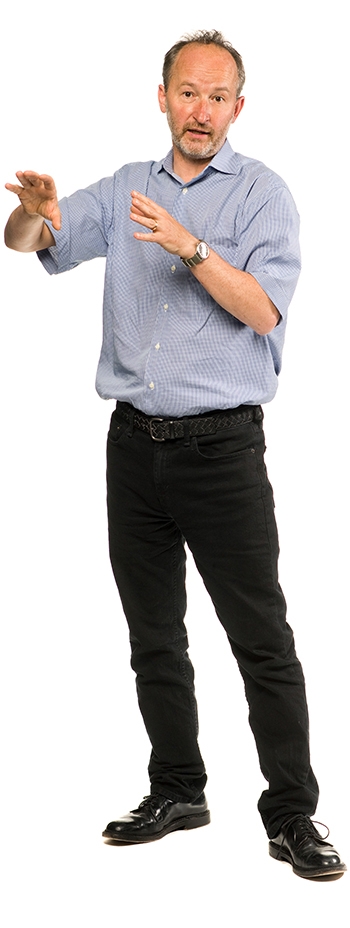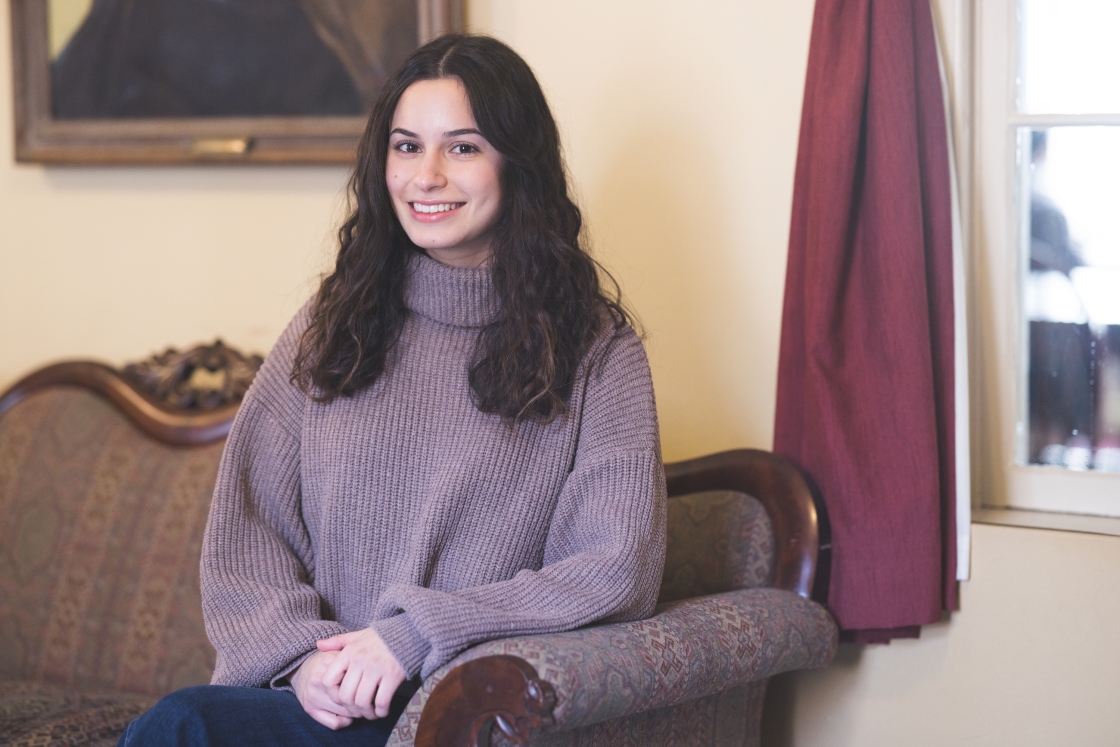
This Focus on Faculty Q&A is one in a ongoing series of interviews exploring what keeps Dartmouth professors busy inside—and outside—the classroom.
Tillman Gerngross, Thayer School of Engineering professor, biotech entrepreneur, and associate provost for the Office of Entrepreneurship and Technology Transfer, spoke with Dartmouth Now about the companies he started, metabolic engineering, and some of his favorite cars.
Your father was an architect from Austria and your mother was a sculptor born in Germany. How did you discover metabolic engineering?
I think early on I was already very interested in science, whereas my parents were very artistic. It was interesting, but there was nothing absolute about it. And there was a certain purity and intellectual rigor around science that made me feel very comfortable, because there’s a right answer or there’s a wrong answer.
What did you begin working on?
At the time a lot of people were trying to figure out how to produce biodegradable plastic from corn enzymes. That’s what I worked on for almost seven years, and then concluded that that’s a pretty bad idea. When you figure out actually how much energy it costs to grow corn, the fossil fuels it takes to grow and process that corn, and the space you need to grow millions of tons to ultimately make this—and you compare that with the conventional approach of making plastic—this is actually a far less attractive approach from an environmental perspective.
And you turned to creating human proteins through yeast. Yes. That’s what GlycoFi did. There was a confluence of factors around the year 2000. The scientific community was about to complete the sequencing of the human genome. And at the time, there were several drugs that were essentially based on human genes.
I’ll give you an example. In the olden days, the way you would get insulin was either from pigs or cows. But in the early ’80s, through the advent of recombinant DNA technology and genetic engineering, we were able to isolate the human gene for insulin, clone it into bacteria, and make bucket loads of insulin in a recombinant fashion that, by the way, was entirely human.
How did you take the research from here?
We had a really easy way of making 30 percent of therapeutic human proteins, but the remaining 70 percent were glycoproteins that were really, really hard to make. Glycoproteins are more complex—they essentially have a number of sugars connected to them. We had to mimic the protein sequence and make sure that it is human, and the sugars that are decorating those proteins also had to be human.
So I said, “Hmm. That sounds like a quality problem to me.” I can make the human protein exactly the right amino acid sequence, but it will have the wrong sugars on them. This was the problem we solved and commercialized with GlycoFi. It was a big deal. That was one of the, I would say, most comprehensive cell engineering endeavors ever attempted, certainly at the time.
What did you do with this discovery? I
did what every academic would do, which is write grant applications. They all got rejected. And at that time I was teaching, with the Dean Emeritus Charles Hutchinson, a course called “Emerging Technologies.” Hutch and I had frequent lunches at Byrne, and he asked me, “What are you working on?” I told him I was working on this problem. He suggested I talk with three overseers of the engineering school, at Thayer. They all signed on. So Hutch and I founded GlycoFi.
We had collaborations with many of the major pharma companies. In 2006, a frenzy ensued where they wanted to control it, and so it became a battle between several of those companies, and Merck prevailed in that battle and acquired the company.
For $400 million?
Four hundred, yeah, in cash. Which was a good thing. So the investors did well, Dartmouth did well. We had given some Founders’ shares to Dartmouth because they allowed us to use laboratory space here.
And there are several other companies that you’re associated with.
Yes. There is Adimab, which develops drugs based on antibodies. Adimab has just over 70 employees. Last year we did revenues of $75 million. It’s based at Centerra in Hanover.
Then there are two more drug discovery companies: Arsanis; and Alector, which is a company that works in the area of neurodegeneration—Alzheimer’s disease. There’s also a company called Avitide, which develops technology that helps you purify proteins in bioprocessing.
Obviously you’re busy. Why take on the position of associate provost for the Office of Entrepreneurship and Technology Transfer?
It is a great opportunity. I think we can really position Dartmouth in a unique way that differentiates it from other academic institutions, yet keep it true to our values of being a more nimble and entrepreneurial institution. We have a great business school here.
We have a great engineering school here. We have a great medical school here. I would argue, let’s leverage all these pieces in a way that allows us to do things that other institutions cannot. Also, you cannot go to a leading venture capital firm in this country that doesn’t have some Dartmouth connection. So let’s find a way of engaging them.
How did you come to buy the Canaan Fair Speedway?
Canaan is really interesting, because most of the racers lost money. And the racetrack operators’ income went to insurance companies or to NASCAR. I asked myself, how do you think about economic development? I’m working with several people on various concepts that I’m not at this point ready to discuss.
Do you have any particular personal interest in cars?
I like tinkering. I always liked older cars. I have a particular era that I’m interested in—the late ’60s, early ’70s.
I have a garage where I keep a ’71 Citroën DS 21, a ’67 Jaguar Mark 2 sedan, a ’71 Mercedes 280SL, a ’67 Cadillac DeVille, and I think that’s it.
Do you go to rallies?
No. Just drive around town. They’re not over-restored or anything, but they are well maintained, and they all run, and I drive them.
Do you work on them yourself?
Sure. I change the oil. Or, you know, electronics, whatever needs to be done. When you work on brain stuff, like when all you do is think, it’s great to do stuff with your hands every once in a while.
